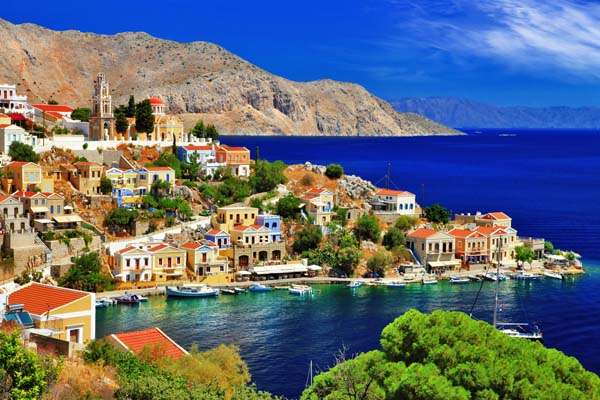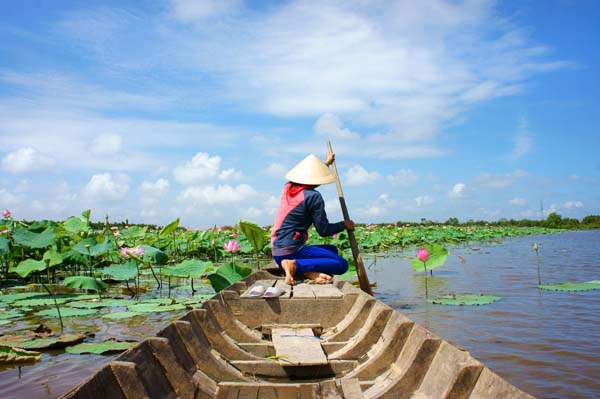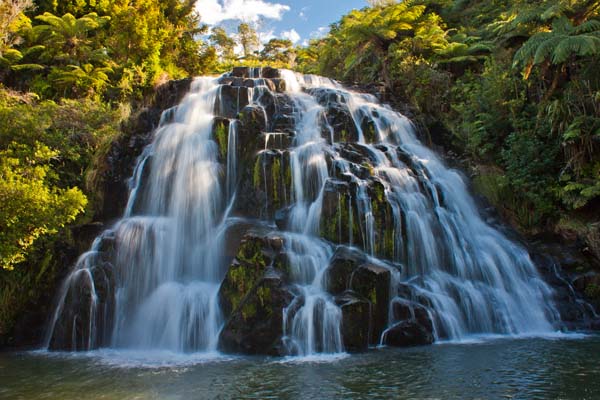Travel can always be an educational experience if you have the right attitude. From learning the local language and dealing with the country’s currency to involving kids with planning and packing, travel can teach your kids a little more about the world in several ways. That being said, some destinations offer more obvious learning opportunities than others. Here are some of our favourites from a wide range of distances from Qatar. As a bonus, all these destinations have direct flights from Hamad International Airport!
Short Haul: 0 to 4 hours
Travelling with small kids can be overwhelming, especially when they are very young. Many families do their best to avoid long flights or ones that involve major disruptions to sleep schedules or time zone changes. As such, we’ve chosen three incredible but nearby destinations to explore.
Jordan (3 Hours)
Starting in Jordan, finding some really cool educational experiences to share with your kids is not hard. This country is so steeped in history that you could easily spend a month in it.
The obvious place to start is Wadi Musa, or Petra, as it is commonly known in international circles. This historical and archaeological city has been inhabited from as early as 7000 BC. Here, you can learn about the Nabateans—Wadi Musa’s earliest inhabitants—and the Romans.
Amman, Jordan’s capital, also has a history dating back to the Romans, as does the abandoned city of Jerash, which is known as Jordan’s Pompeii. This city was exceptionally well preserved under sand for hundreds of years. In Madaba, you can learn about mosaics as the sixth-century mosaic map of the Holy Land in the Greek Orthodox Church of St. George is there. Nearby is Mount Nebo, where Prophet Moses is believed to have been granted a view of the Promised Land before his death. While you’re in the area, head to the Dead Sea, where you can marvel at your ability to float in its tranquil waters while talking to your children about how its high salt content makes this possible.
Egypt (3.5 Hours)
Home to the only remaining ancient wonder of the world, Egypt is a fascinating place to visit.
The first stop has to be a visit to Cairo. From there, you can see the amazing structures built by the ancient Egyptians, including the pyramids, the sphinx, and many temples. In the nearby museum, you can learn about how the pyramids were built, the mummification process, and why wealthy and royal Egyptians were buried with so much treasure. Making this relevant to kids is easy: you can learn about hieroglyphics, find out how to play one of their many popular board games, and research how they celebrated all their biggest festivals. A Nile cruise can also cement this experience by taking you back to how they travelled over 2,000 years ago as you float from Cairo to Luxor and back again.
If you’re ready for some R&R, take your kids to the Red Sea, where you will find some of the world’s best diving sites. Take some time to teach them how to recognise different types of fish and to discuss why our planet’s seas and oceans are so important to us. While diving isn’t for everyone (kids must be 10 years old to learn), swimming in the turquoise waters and being surrounded by shoals of colourful fish is pretty universal.
Greece (4.5 hours)
If it’s Romans you’re looking for, Greece is one of the places to go to find them. The country is littered with archaeological ruins to discover and explore. Athens probably has the most remarkable collection, including the famous Parthenon, a former temple on the Athenian Acropolis dedicated to the ancient Greek goddess Athena.

Athens also has an impressive assortment of temples and agoras (public open spaces used for assemblies and markets), an enormous theatre, and a stadium. If capital cities aren’t your thing, you can find smaller but similar ruins all over the country and with fewer crowds.
But there’s much more to Greece than ruins. The country is known for being the birthplace of modern philosophy and the inventor of democracy, as well as its contribution to medicine and science. It wasn’t all STEAM subjects, however. The concepts of tragedy and comedy originated in Greece, and the early Greeks were also influential in the development of map-making. Greece was also the first place to have a lighthouse, and its boats were the first to have anchors. Finally, if you have mini foodies in your family, there’s plenty for them to discover here. You can learn about olive oil-making and feta cheese or enjoy historical delicacies such as souvlaki, which dates back to ancient Greece!
Medium Haul: 5 to 9 Hours
Being prepared to travel a little longer can get you further into Asia, Europe, and Africa. Therefore, those few extra hours open up many more doors to inspiring and educational destinations. These places aren’t so far that you’ll spend half your trip recovering from jetlag and an excruciatingly long journey, but they’re not particularly close to Qatar either.
Kenya (5.5 hours)
It’s hard to choose just one African nation for this list, as many are worth mentioning. Kenya is, debatably, one of Africa’s better-known tourist destinations. As one of the wealthier countries, it certainly has better and more reliable travel infrastructure domestically and in terms of the number of daily international flights (although this also means more crowds).
Kenya is home to sights and attractions that will fill your kids’ minds for years to come. Starting with its spectacular and wide variety of wildlife and birdlife, there will be no lack of things to look at during your stay. As well as being one of only two places to observe The Great Migration, the country is also one of the best places in the world to see big cats and is home to many endangered black rhinos. This makes it the perfect place to teach your kids about the environment and more concerning aspects of animals’ lives, such as the effects of globalisation and poaching.
Kenya is also a great place to learn about people. It is home to more than 40 tribes, and around 70 languages are spoken there. Some tribes have developed tourist-focused learning opportunities so you can visit them and begin to understand a little more about their communities. Kenya is also geographically diverse: its coastline on the Indian Ocean has mangrove swamps, and it contains mountains and plateaus in the middle. It also houses The Great Rift, an intra-continental ridge system formed by three tectonic plates interacting. There are also several volcanoes along this line, offering you yet another talking point with your children.
Vietnam (7 Hours)
One of the gems of southeast Asia, Vietnam is famous for many things, including its food, the plethora of motorbikes on its streets, strings of brightly coloured paper lanterns, and, unfortunately, the Vietnam War.
There are so many things you can learn in this stunning country. Starting with the devastating almost 20-year war with the United States, it’s best to go to Ho Chi Minh City—formerly known as Saigon—where you can visit the War Remnants Museum and tour the Cu Chi Tunnels. As with anything connected to war, both are sobering in their own ways. Depending on your kids’ ages, you may consider this content too distressing.

Thankfully, there is a lot more to explore in Vietnam. The cuisine is some of the most famous in the world, so a family-friendly cooking class or food tour is an absolute must! Vietnam is also home to a diverse range of landscapes, from limestone islands and beaches to rice terraces and some incredible caves. This makes taking a local cruise or tour an excellent opportunity to discover more about the country’s geography.
Long Haul: 8+ Hours
Not for the faint-hearted, families willing to travel that extra mile (or 5,000!) will reap the benefits by the bucket load. There aren’t as many options for direct flights, but the destinations are as varied as they come in terms of sights, attractions, and learning opportunities.
Japan (10 Hours)
Few people can deny that Japan is full of learning experiences. This country comprises nearly 7,000 islands, including the five main islands of Okinawa, Hokkaido, Honshu, Kyushu, and Shikoku.
Learning about Japan’s geography is a great place to start. The islands were formed by several massive ocean and plate movements, and they now sit in the Pacific Ring of Fire, an area characterised by significant volcanic and seismic activity.
The country has a vibrant history to unravel with your kids. So, depending on their interests, exploring this could go in many directions, including their tragic involvement in World War II, emperors, castles, samurai, and ninjas. Even their calendars and dates are an interesting topic to consider: they use the Western Gregorian calendar and the Chinese lunar calendar, plus their own calendar, which is based on the reigns of emperors!
Cultural activities that you could do include origami, washi paper, or weaving classes and eating traditional foods such as sushi, gyoza, or ramen. You can also learn about Shinto and Buddhism—two main religions in Japan—or go to a sumo wrestling match or practice. Consider also timing your visit to discuss seasons—the winter snow in the north and the cherry blossoms in spring are perfect ways to demonstrate this concept.
New Zealand (19 hours)
Qatar Airways’ longest flight takes 19 hours to get you from Doha to Auckland, the capital of New Zealand. The journey can be the first place to start when treating this as an educational experience. Talk to your kids about the flight—the engineering required to get there, and how far we’ve come since the first commercial flight in 1914. This is also a good time to discuss carbon footprints and how to offset the emissions of a long flight (or any flight, for that matter).

Once on the ground, there’s no end to your learning options. Stick to the eco theme and find sustainable tour operators and accommodation options to enhance your kids’ understanding of sustainable travel. You’ll find other learning opportunities within those areas, including trekking through national parks, where you can discuss everything from ecosystems and geothermal chemistry to volcanoes and erosional processes. You can talk about conservation on a whale-watching trip or when seeing glow worms in caves. When stargazing, you can have a conversation about ancient navigational practices and investigate what makes the Southern Lights happen while looking at them from the ground.
How to Make Any Trip More Educational
There are, of course, ways to make any trip to any destination more educational. Here are some extra ideas:
- Find a walking/cycling tour: this is a great way to see a place and get some insider information on where you are.
- Take a class: these are a great way to connect with locals and learn more about native cultures and traditions through cooking, dancing, and handicrafts.
- Read: researching a destination before and after you go can help you understand the area better and provide context for your kids.
- Visit a museum: museums are a fabulous way to learn about the place you’re in, and they often have kid-friendly activities to engage their youngest visitors.



